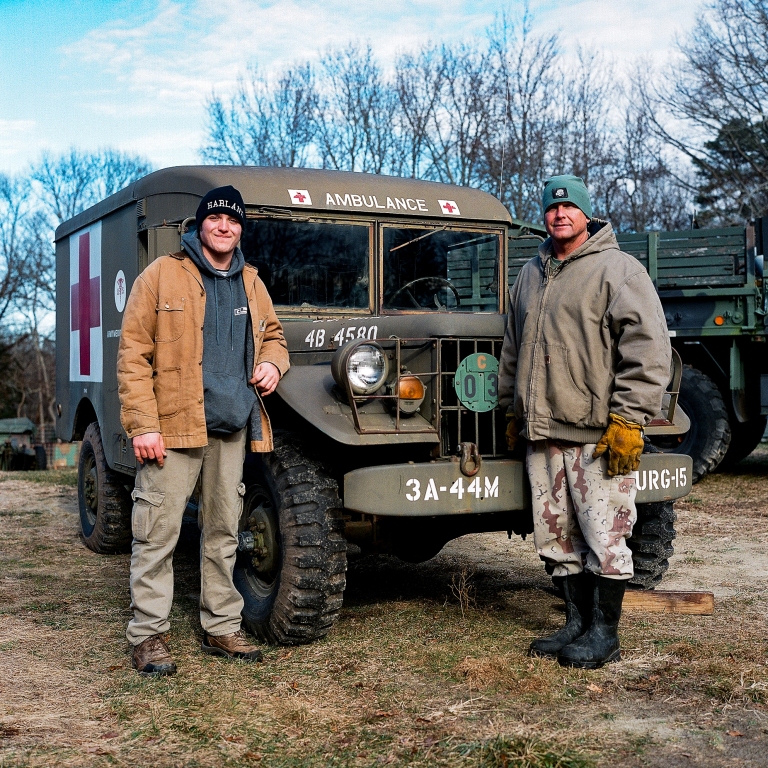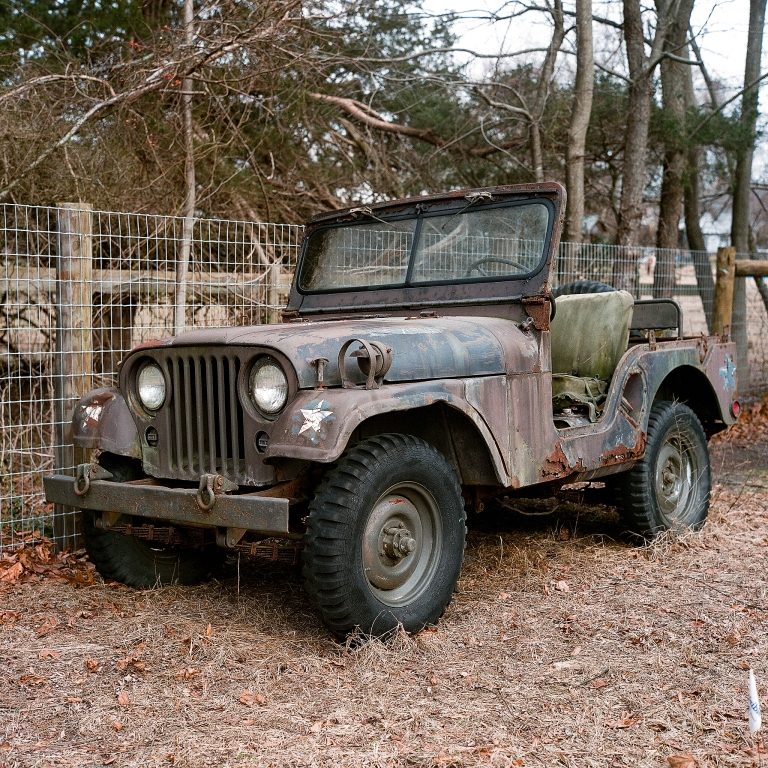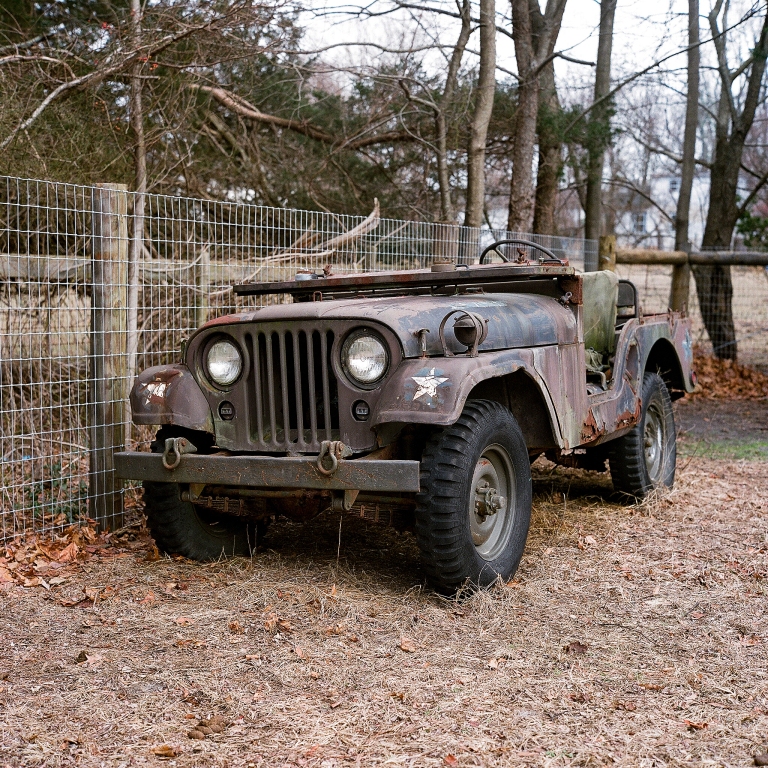It is common for collectors to pass the collecting gene down to their children, be it a passion for baseball cards, or cars and trucks, or motorcycles. For Jude and his son, Harlan, the passion is in the collecting of vintage military vehicles. These were once the workhorses of the armed forces, now preserved by two men with a self-appointed responsibility to these pieces of history. Much as Jude is passing his hobby down to the next generation of his family, future generations will have the opportunity to marvel in the existence of these man-made tools of transportation of those who protect and serve a nation.

“We just moved in from the other side of town,” Jude says of his six-acre plot currently home to his collection of military vehicles. “In the spring, we will have this set up like a base with tents. I do the whole base concept. I’ll have that set up here soon. I’m a stickler for the time periods. It’s my version, but it’s the original props. Everything from ashtrays from the 1960s to the lighters to the chairs. At my old farm, I had it all set up. I have guard towers on trailers that I built and took with me here.”

“I’m in the dumpster business,” Jude explains. “If I can make a few bucks with this stuff, that’s fine, but mostly I love doing the shows. There is so much talent worldwide with the guys that can put these together.”
While Harlan takes his collecting cue from his father, Jude took it from his brother growing up.
“My older brother got me into this,” he explains of his start in collecting military vehicles. “I’ve been dealing with this stuff since 1973, when I was 10 years old. A guy turned my brother on to this and we have been doing it together ever since. We are into the tugboats. Whatever the tax payer pays for, the government sells, in one form or another, either in scrap or whole. They sell ships. They sell sleeping gear. They sell buildings. They sell land. They sell the lighthouses they put up. They’re for sale, and they are cheap. Some are on land and some out at sea. Whatever municipalities have, it all comes up for sale sooner or later to the public.”
“This is my favorite hobby,” Harlan says enthusiastically. “We go to shows with them, and we just drive them around.”

“He’s been doing this almost his whole life,” Harlan says of his father’s collecting. “This is what I love. I was born into it. My dad started when he was a teenager, but I was born into this.”

“Those are old steel trucks,” Harlan explains. “The driver’s seat is in the center, so you can have long steel beams on each side. It has a door in the roof so that you can climb in and out. That came out of Park Steel in Neptune, New Jersey.”
“Those were from the late 1940s to the 1960s,” Jude adds.


“This is an M-135 from the 1950s,” Harlan explains. “This has the single tires. The M-211 had the dual tires.”

“That’s an 814 from the 1970s or 1980s,” Harlan continues. “Those had the longer, extended cabs. They’re awesome. They are not the greatest on the road, but off road, they are great.”

“That’s a 1957 DAF, built in Holland,” Jude says.


“This is a 1955 Dodge Military Ambulance,” Jude explains. “This production ran from 1951 to 1958. This replaced the WWII version. These served all through Vietnam.”



“This is a 1952,” Jude explains of his Willys Jeep. “These were made from 1952 to 1968. This is the third in line from WWII Willys Jeep. These served in Vietnam too. They weren’t the primary Jeep, but they were there. They needed a lot of these Jeeps stateside with so many bases and personnel. Right after Willys produced this one, in 1955, they made the civilian version called the CJ5.”
